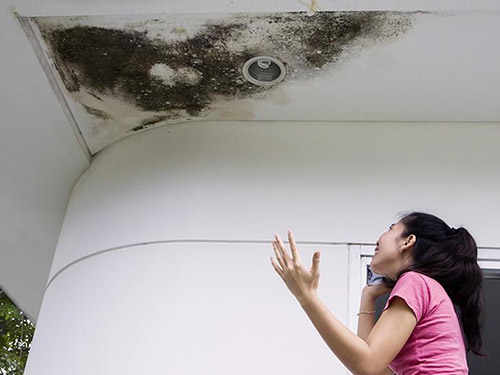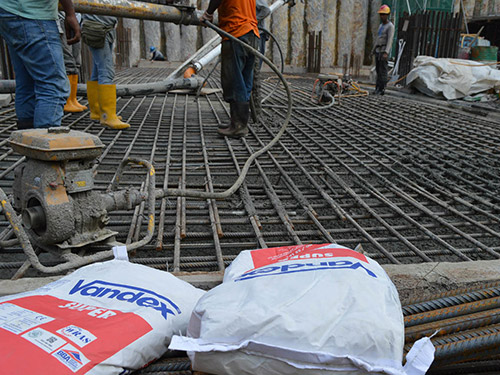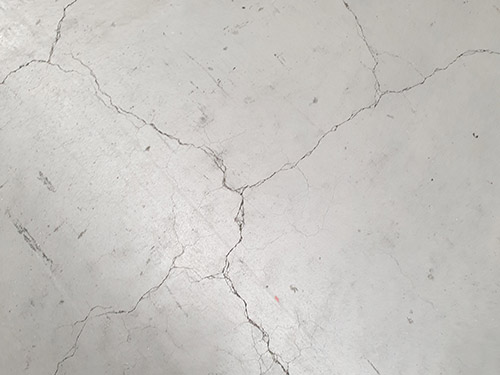Crystalline Waterproofing
Crystalline waterproofing materials can be applied as a slurry coating to an existing concrete surface, such as a foundation wall or floor slab, as well as broadcast onto fresh horizontal concrete and trowelled into the surface. An alternative approach involves adding the admixture directly into the concrete at the batch plant. In all cases, the waterproofing function includes both complex chemical and physical mechanisms that take place within the concrete surface.
As concrete hardens, the reaction between water and cement generates chemical by-products, which reside in concrete’s capillaries and pores. When crystalline waterproofing materials are applied, the by-products of cement hydration and the crystalline chemicals produce a chemical reaction with very dense, insoluble crystal formations (image below).

This crystalline formation will only occur where moisture is present, forming in the concrete’s pores, capillary tracts, and shrinkage cracks — the same routes susceptible to water ingress. Chemical diffusion can carry these crystalline materials deep into the concrete, plugging the voids in concrete and becoming an integral, permanent part of the structure.
In lieu of penetrating from the surface as seen with a coating application, adding crystalline waterproofing chemicals to the concrete at the batch plant ensures that the crystalline formation occurs uniformly throughout the slab or structure.
In addition, by adding crystalline chemicals directly to the concrete mix at the time of batching, the same crystal growth and waterproofing functions take place in a quicker, more cost-effective manner. This is because labour associated with a surface treatment application is eliminated.
Procedural sequence for addition will vary according to the type of batch, plant operation and equipment. For most mixtures, the dosage rate of integral crystalline waterproofing admixture is 1-2%, based on the amount of cementitious material in the mix.
See Tremco CPG's Range of Vandex Crystalline Waterproofing Solutions


 Waterproofing and Roofing
Common Problems Associated with Poor Waterproofing
Waterproofing and Roofing
Common Problems Associated with Poor Waterproofing
 Concrete, Waterproofing and Roofing, Infrastructure
The 5 Main Benefits of Crystalline Waterproofing
Concrete, Waterproofing and Roofing, Infrastructure
The 5 Main Benefits of Crystalline Waterproofing
 Concrete
A Beginner’s Guide to Managing Cracks in Concrete
Concrete
A Beginner’s Guide to Managing Cracks in Concrete
